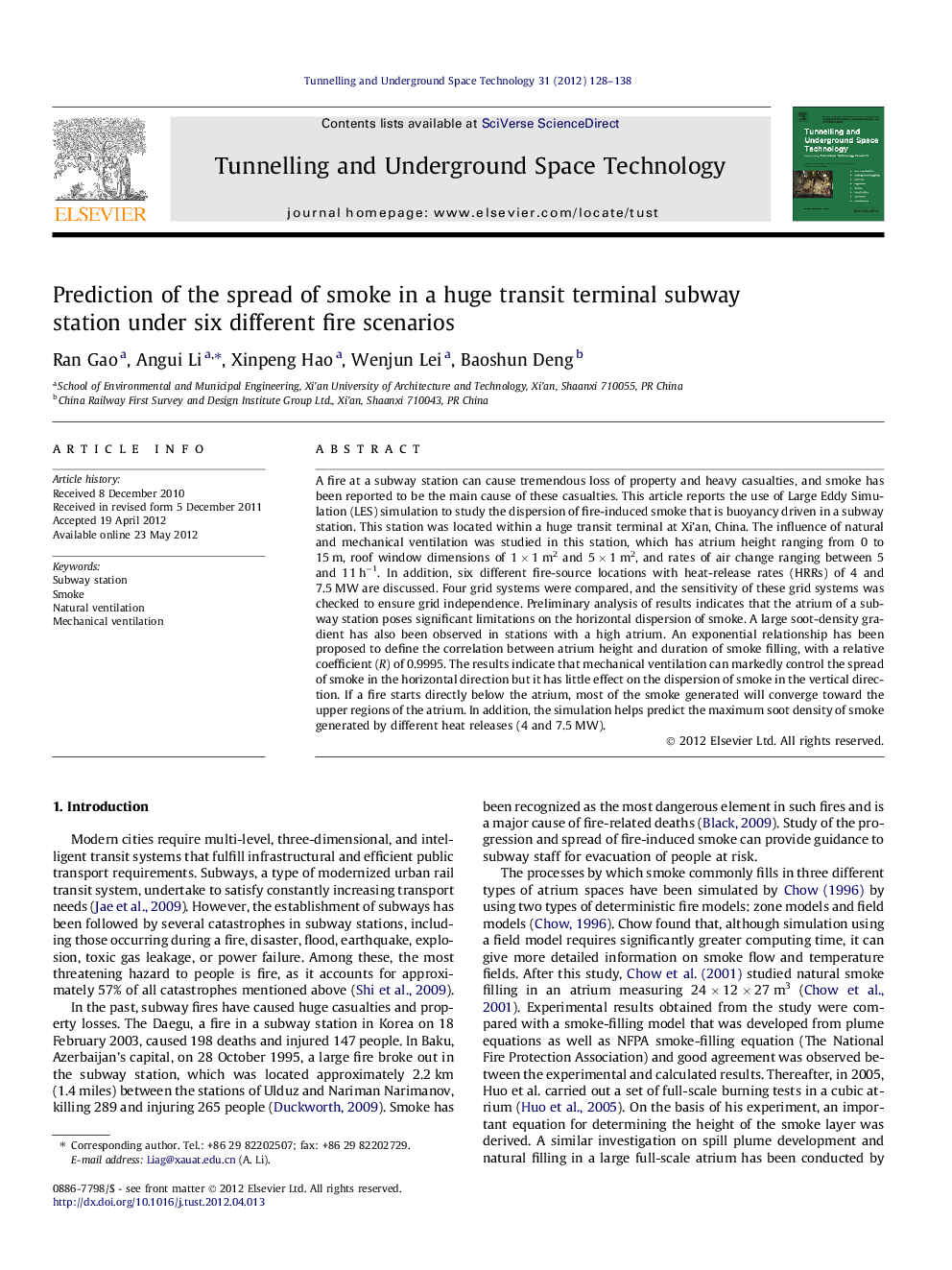| Article ID | Journal | Published Year | Pages | File Type |
|---|---|---|---|---|
| 312432 | Tunnelling and Underground Space Technology | 2012 | 11 Pages |
A fire at a subway station can cause tremendous loss of property and heavy casualties, and smoke has been reported to be the main cause of these casualties. This article reports the use of Large Eddy Simulation (LES) simulation to study the dispersion of fire-induced smoke that is buoyancy driven in a subway station. This station was located within a huge transit terminal at Xi’an, China. The influence of natural and mechanical ventilation was studied in this station, which has atrium height ranging from 0 to 15 m, roof window dimensions of 1 × 1 m2 and 5 × 1 m2, and rates of air change ranging between 5 and 11 h−1. In addition, six different fire-source locations with heat-release rates (HRRs) of 4 and 7.5 MW are discussed. Four grid systems were compared, and the sensitivity of these grid systems was checked to ensure grid independence. Preliminary analysis of results indicates that the atrium of a subway station poses significant limitations on the horizontal dispersion of smoke. A large soot-density gradient has also been observed in stations with a high atrium. An exponential relationship has been proposed to define the correlation between atrium height and duration of smoke filling, with a relative coefficient (R) of 0.9995. The results indicate that mechanical ventilation can markedly control the spread of smoke in the horizontal direction but it has little effect on the dispersion of smoke in the vertical direction. If a fire starts directly below the atrium, most of the smoke generated will converge toward the upper regions of the atrium. In addition, the simulation helps predict the maximum soot density of smoke generated by different heat releases (4 and 7.5 MW).
► We study the dispersion of fire-induced buoyancy driven smoke in a subway station with atrium. ► We use natural ventilation to exhaust smoke under fire cases. ► It brings a new perspective to the field of the smoke control of atrium fire. ► It provide theoretical basis for evacuation with different fire source locations.
